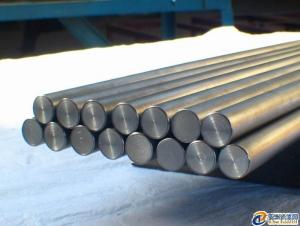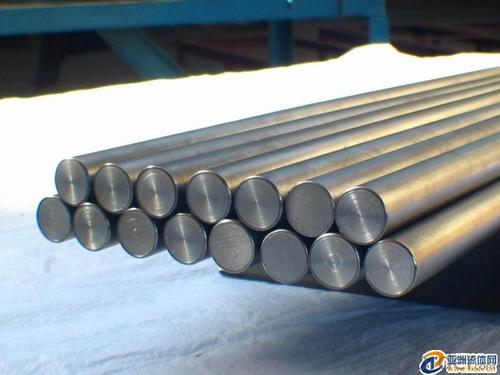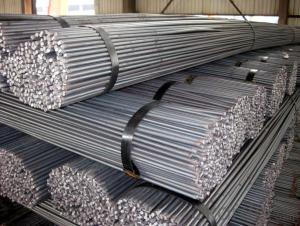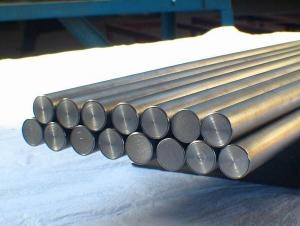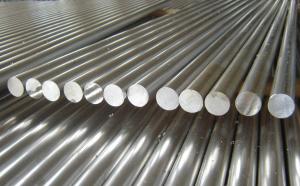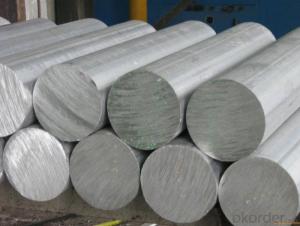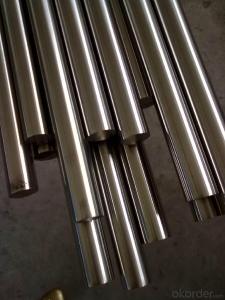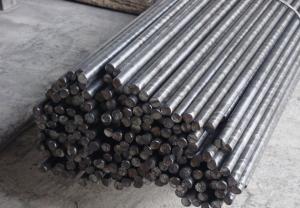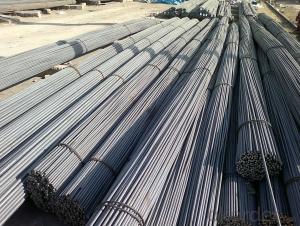High Quality Round Bar Q195 Q235 Hot Rolled 5-28mm
- Loading Port:
- China Main Port
- Payment Terms:
- TT or LC
- Min Order Qty:
- -
- Supply Capability:
- -
OKorder Service Pledge
OKorder Financial Service
You Might Also Like
Product Description:
OKorder is offering High Quality Round Bar Q195 Q235 Hot Rolled 5-28mmat great prices with worldwide shipping. Our supplier is a world-class manufacturer of steel, with our products utilized the world over. OKorder annually supplies products to European, North American and Asian markets. We provide quotations within 24 hours of receiving an inquiry and guarantee competitive prices.
Product Applications:
1) Suitable for making various strong cutting tool abrasion resistance, impact resistance.
2) Used to produce all kinds of high hard and super hard saw blade, drill, tap, broach, gear hob and various kinds of milling cutter.
3) Used for advanced punching die, screw die, and the toughness and complicated shape of the punch, etc.
4) Is used for cold forging die and drawing mode, etc.
5) Recommended watchcase factory, screw factory and other cold stamping products industry use.
Product Advantages:
OKorder's High Quality Round Bar Q195 Q235 Hot Rolled 5-28mm are durable, strong, and resist corrosion.
Main Product Features:
· Premium quality
· Prompt delivery & seaworthy packing (30 days after receiving deposit)
· Corrosion resistance
· Can be recycled and reused
· Mill test certification
· Professional Service
· Competitive pricing
Product Specifications:
1. Grade: GB, JIS, ASTM, EN
2. Grade: Q235, SS400, A36, S235JR
3. Diameter and mass: As below
Diameter | Mass | Diameter | Mass | Diameter | Mass |
(mm) | (kg/m) | (mm) | (kg/m) | (mm) | (kg/m) |
6 | 0.22 | 22 | 2.98 | 53 | 17.30 |
7 | 0.30 | 24 | 3.55 | 56 | 19.30 |
8 | 0.40 | 25 | 3.85 | 60 | 22.20 |
9 | 0.50 | 26 | 4.17 | 63 | 24.50 |
10 | 0.62 | 28 | 4.83 | 65 | 26.00 |
11 | 0.75 | 30 | 5.55 | 70 | 30.20 |
12 | 0.89 | 32 | 6.31 | 75 | 34.70 |
13 | 1.04 | 34 | 7.13 | 80 | 39.50 |
14 | 1.21 | 36 | 7.99 | 85 | 44.50 |
15 | 1.39 | 38 | 8.90 | 90 | 49.90 |
16 | 1.58 | 40 | 9.86 | 95 | 55.60 |
17 | 1.78 | 42 | 10.90 | 100 | 61.70 |
18 | 2.00 | 45 | 12.50 | 120 | 88.85 |
19 | 2.23 | 48 | 14.20 | 140 | 120.93 |
20 | 2.47 | 50 | 15.40 | 150 | 138.82 |
4. Material: Mild Steel
5. Heat treatment of high quality steel:
Fire: Isothermal annealing temperature is 800 ~ 880 °C, with 10 ~ 20 °C, the furnace cooling to about 600 °C, hardness above HB269.
Preheat temperature: 730-730 °C
Quenching temperature: 1190-1210 °C
Tempering temperature: 540-595 °C
Cold drawn, hardness 285 HBS
Cold drawn after annealing condition, hardness 277 HBS
Quenching methods: oil quenching, air cooling or salt bath quenching
FAQ:
Q1: Why buy Materials & Equipment from OKorder.com?
A1: All products offered byOKorder.com are carefully selected from China's most reliable manufacturing enterprises. Through its ISO certifications, OKorder.com adheres to the highest standards and a commitment to supply chain safety and customer satisfaction.
Q2: How do we guarantee the quality of our products?
A2: We have established an advanced quality management system which conducts strict quality tests at every step, from raw materials to the final product. At the same time, we provide extensive follow-up service assurances as required.
Q3: How soon can we receive the product after purchase?
A3: Within three days of placing an order, we will begin production. The specific shipping date is dependent upon international and government factors, but is typically 7 to 10 workdays.
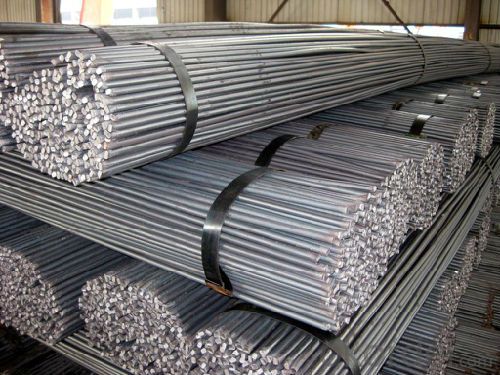
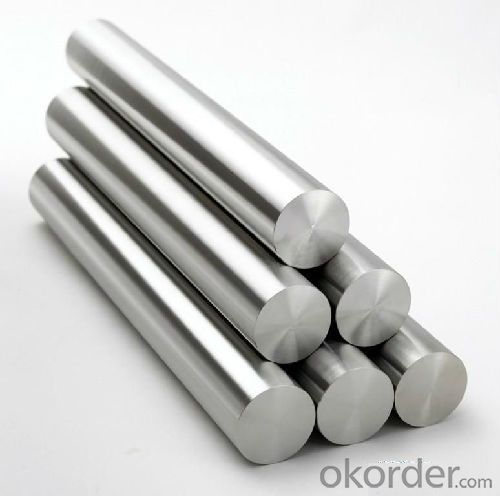
- Q: What are the corrosion resistance properties of steel round bars?
- Steel round bars have excellent corrosion resistance properties due to the presence of alloying elements such as chromium, nickel, and molybdenum. These elements form a protective oxide layer on the surface of the steel, preventing the metal from coming into contact with corrosive substances. Additionally, stainless steel round bars are highly resistant to rust and corrosion caused by exposure to moisture, chemicals, and atmospheric conditions, making them suitable for various applications in industries such as construction, marine, and manufacturing.
- Q: What are the quality control measures for steel round bars?
- Steel round bars are subject to a series of inspections and tests to ensure that they meet the necessary standards and specifications. These measures play a vital role in guaranteeing the bars' structural integrity and reliability. Common quality control measures for steel round bars include: 1. Visual Inspection: Bars are visually examined to identify any surface defects like cracks, pits, or rust. This ensures that the bars have a smooth surface finish and are free from visible imperfections. 2. Dimensional Inspection: The diameter, length, and straightness of the bars are measured to ensure they adhere to the required tolerances. Any deviations from the specified dimensions can impact the bars' performance and compatibility in different applications. 3. Chemical Composition Analysis: Chemical composition analysis is carried out to confirm the percentage of various elements present in the steel. This analysis ensures that the bars possess the correct alloying elements in the proper proportions, which directly influence their mechanical properties and performance. 4. Mechanical Testing: Various mechanical tests are conducted to assess the bars' strength, hardness, and other mechanical properties. These tests may include tensile, impact, and hardness testing. They help determine if the bars meet the necessary durability and strength standards. 5. Ultrasonic Testing: Ultrasonic testing is often employed to detect internal defects such as voids, inclusions, or cracks within the steel round bars. This non-destructive testing technique utilizes high-frequency sound waves to identify flaws that may compromise the bars' structural integrity. 6. Surface Treatment Inspection: If the steel round bars undergo any surface treatments like heat treatment or coating, an inspection is conducted to ensure that these treatments are correctly applied and meet the required specifications. 7. Certification and Documentation: Quality control measures also encompass proper documentation and certification of the steel round bars. This ensures traceability and provides evidence that the bars have undergone the necessary inspections and tests, instilling confidence in customers regarding the product's quality. In summary, these quality control measures for steel round bars guarantee their high quality, compliance with necessary specifications, and suitability for their intended applications.
- Q: What is the cost of steel round bars compared to other materials?
- The cost of steel round bars can vary depending on various factors such as the grade of steel, the size and dimensions of the bar, and market conditions. However, in general, steel round bars tend to be more cost-effective compared to other materials commonly used in construction and manufacturing. For instance, when compared to materials like aluminum or titanium, steel round bars are typically more affordable. Steel is abundantly available, making it a cost-efficient choice for many applications. Additionally, steel has excellent strength and durability properties, making it a preferred material for structural purposes. Compared to materials like wood or plastic, steel round bars may be more expensive initially. However, when considering the long-term benefits such as its longevity, resistance to corrosion, and minimal maintenance requirements, steel still offers a cost-effective solution. It is important to note that the cost of steel round bars can vary significantly depending on market conditions, such as the availability of raw materials and the demand for steel products. Additionally, specialized or high-grade steel alloys may come at a higher cost due to their specific properties or manufacturing processes. In summary, steel round bars generally offer a cost-effective option compared to many other materials used in construction and manufacturing. However, it is always recommended to research current market prices and consider specific project requirements before making any final cost assessments.
- Q: What are the different testing methods for steel round bars?
- There are several different testing methods for steel round bars, including visual inspection, dimensional inspection, chemical composition analysis, mechanical properties testing, and non-destructive testing methods such as ultrasonic testing and magnetic particle inspection. Each of these methods helps ensure the quality and integrity of steel round bars, allowing for proper evaluation and identification of any potential defects or inconsistencies.
- Q: What is the difference between a centerless ground and a polished steel round bar?
- A centerless ground steel round bar and a polished steel round bar are both types of steel bars that have undergone different finishing processes, resulting in distinct qualities and characteristics. A centerless ground steel round bar is produced by grinding the surface of the steel bar using a specialized machine called a centerless grinder. This process removes any imperfections or irregularities on the surface, resulting in a smooth and uniform finish. The centerless grinding process also ensures that the diameter of the bar remains consistent throughout its length. This makes centerless ground steel round bars ideal for applications that require precise dimensions and a smooth surface, such as in machining operations or as a base material for further processing. On the other hand, a polished steel round bar is achieved through a polishing process, where the surface of the steel bar is buffed and polished using abrasive materials. This process helps to enhance the aesthetic appearance of the steel bar, giving it a shiny and reflective surface. Unlike centerless grinding, polishing does not involve removing material from the surface but rather smoothing and refining it. Polished steel round bars are often used in decorative applications, such as in architecture, interior design, or as components in high-end furniture. In summary, the main difference between a centerless ground steel round bar and a polished steel round bar lies in the finishing process. Centerless grinding focuses on achieving precise dimensions and a smooth surface, making it suitable for functional applications. On the other hand, polishing aims to enhance the visual appeal of the steel bar, making it more suitable for decorative purposes.
- Q: What is the difference between a hot-finished and a cold-finished steel round bar?
- The manufacturing process and resulting physical properties distinguish hot-finished and cold-finished steel round bars. Hot-finished bars are made by subjecting the steel to high temperatures in a furnace, followed by rolling processes. This method allows for greater malleability, making it easier to shape the steel to its desired dimensions. Consequently, hot-finished bars often have a rougher surface and may exhibit imperfections such as scaling and decarburization. Nonetheless, the high-temperature process enhances the steel's mechanical properties, including tensile and yield strength, making it suitable for applications requiring greater strength and durability. Conversely, cold-finished bars undergo a distinct manufacturing process. They are formed by cold rolling the steel at room temperature, resulting in a smoother surface finish and tighter dimensional tolerances compared to hot-finished bars. The absence of high temperatures eliminates scaling and decarburization, yielding a more uniform and cleaner appearance. Although cold-finished bars may have slightly lower tensile and yield strength than their hot-finished counterparts, they offer improved dimensional accuracy and a smoother surface, making them ideal for precision machining or applications that prioritize aesthetics. To summarize, the disparities between hot-finished and cold-finished steel round bars lie in the manufacturing process, surface finish, dimensional accuracy, and mechanical properties. Hot-finished bars provide greater strength and suit applications that prioritize durability, whereas cold-finished bars offer superior surface finish and dimensional accuracy, making them ideal for precision machining or applications where aesthetics are crucial.
- Q: Can steel round bars be used in electrical applications?
- No, steel round bars are not typically used in electrical applications. Electrical conductors are typically made of materials that are good conductors of electricity, such as copper or aluminum. Steel is not as conductive as these materials and is more commonly used for structural purposes.
- Q: Can steel round bars be used for making pipelines?
- Pipelines can indeed be constructed using steel round bars. Steel is commonly utilized in pipeline construction because of its robustness, longevity, and ability to resist corrosion. Cylindrical in shape, round bars are easily manufactured and can be joined together through welding to create pipelines of different sizes and lengths. The steel round bars employed for pipelines typically consist of carbon or alloy steel, both of which possess substantial tensile strength and can endure high pressure and temperature conditions. Moreover, protective coatings like epoxy or polyethylene can be applied to steel round bars to heighten their resistance to corrosion. As a whole, steel round bars offer a dependable and efficient choice for building pipelines across various industries, including oil and gas, water supply, and construction.
- Q: How do I determine the strength and hardness of a steel round bar?
- In order to assess the strength and hardness of a steel round bar, various methods and tests can be employed: 1. Tensile Test: The strength of a steel bar is commonly determined through this method. It involves subjecting the bar to a tensile force until it fractures, and measuring the maximum force or load it can endure. This test provides information on the bar's ultimate tensile strength, yield strength, and elongation. 2. Hardness Test: Several techniques, such as the Rockwell, Brinell, and Vickers hardness tests, can be utilized to measure the hardness of a steel bar. These tests entail indenting the bar's surface using a standardized indenter and gauging the resulting indentation size. The obtained hardness value indicates the bar's resistance to deformation and wear. 3. Charpy Impact Test: This test gauges the toughness of a steel bar by striking it with a swinging pendulum and measuring the energy absorbed during fracture. It helps assess the bar's ability to withstand brittle fracture under conditions of impact loading. 4. Microstructural Analysis: Examining the microstructure of the steel bar through microscopic observation can offer insights into its mechanical properties. By preparing a polished and etched sample and inspecting it under a microscope, the presence of different phases, grain size, and any structural irregularities can be observed. Various microstructural features can impact the bar's strength and hardness. 5. Chemical Composition Analysis: The chemical composition of the steel bar, particularly the carbon content, significantly influences its strength and hardness. Analyzing the composition using techniques like spectroscopy or chemical analysis can provide valuable information about the bar's mechanical properties. It should be emphasized that these tests and techniques must be carried out by qualified professionals in a controlled laboratory setting to ensure accurate and reliable results. Moreover, specific standards and specifications may exist for different applications, so referring to relevant standards and guidelines can offer further guidance on determining the strength and hardness of a steel round bar.
- Q: What is the difference between a polished and a hot rolled steel round bar?
- The main difference between a polished and a hot rolled steel round bar lies in their manufacturing processes and the resulting surface finish. Hot rolled steel round bars are produced by heating a steel billet or ingot to high temperatures and then rolling it into the desired shape, typically a round bar. This process results in a rough and uneven surface finish with mill scale and imperfections. The hot rolled bars are generally used for applications where surface finish is not critical, such as structural components, machinery parts, and construction materials. On the other hand, polished steel round bars undergo additional processing to achieve a smooth and shiny surface finish. After the hot rolling process, the bars are processed through various grinding and polishing techniques to remove the mill scale, surface imperfections, and achieve a uniform finish. This results in a refined and aesthetically pleasing surface that is suitable for applications where appearance and visual appeal matter, such as decorative items, furniture, and architectural components. In addition to the surface finish, the mechanical properties of the two types of steel round bars can also differ. The hot rolled bars generally have a rougher surface and may exhibit some residual stresses, while the polished bars have a smoother surface and reduced internal stresses. However, the overall mechanical properties, such as strength and hardness, are primarily determined by the grade and composition of the steel used, rather than the manufacturing process or surface finish. In summary, the difference between a polished and a hot rolled steel round bar lies in their surface finish. Hot rolled bars have a rough and uneven surface with mill scale and imperfections, while polished bars undergo additional processing to achieve a smooth and shiny finish. The choice between the two depends on the specific application and the desired appearance of the final product.
Send your message to us
High Quality Round Bar Q195 Q235 Hot Rolled 5-28mm
- Loading Port:
- China Main Port
- Payment Terms:
- TT or LC
- Min Order Qty:
- -
- Supply Capability:
- -
OKorder Service Pledge
OKorder Financial Service
Similar products
Hot products
Hot Searches
Related keywords
